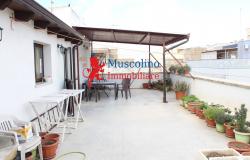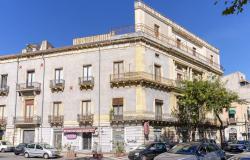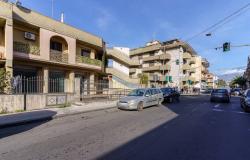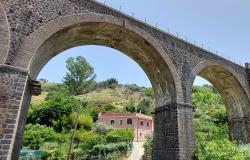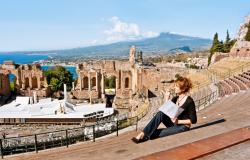Words by Pat Eggleton
Don’t worry – this isn’t going to be a morbid article!
The 1997 Roberta Torre film “Tano da Morire” – one of the first to make fun of the Mafia – opens with a Sicilian funeral procession in which the women sing. They do not, in real life, sing as they follow a coffin to church and then to the cemetery but people do walk silently along the street behind the coffin as the church bell tolls solemnly. Everyone who knew the deceased person even slightly goes to the funeral if they can and this is not because of any morbid fascination with death but simply to support the bereaved family. It is not necessary to wear black any more or even formal clothes. It is enough that you are there.
 Death, as I have said before, can be talked about in Italy and in Sicily in particular it is regarded as part of life. If you visit the grisly Catacombe dei Cappuccini in Palermo you might think that the Sicilians of the past, at any rate, were unhealthily obsessed with the preservation of their bodies after death and it is true that internment in the catacombs became a status symbol. However, we tend to look at these practices from a twenty-first century point of view and we forget how common infant mortality, in particular, was and how difficult this must have been to accept.
Death, as I have said before, can be talked about in Italy and in Sicily in particular it is regarded as part of life. If you visit the grisly Catacombe dei Cappuccini in Palermo you might think that the Sicilians of the past, at any rate, were unhealthily obsessed with the preservation of their bodies after death and it is true that internment in the catacombs became a status symbol. However, we tend to look at these practices from a twenty-first century point of view and we forget how common infant mortality, in particular, was and how difficult this must have been to accept.
 The ancient Egyptians mummified their illustrious dead yet we do not think of them as a morbid people.
The ancient Egyptians mummified their illustrious dead yet we do not think of them as a morbid people.
“I Morti” or “The Day of the Dead” on 2nd November is the day when Sicilians go to the cemetery to honour members of their family buried there but it is not a sad day. On the contrary, children receive presents including the beautiful frutta di Martorana [almond paste shaped and decorated to look like fruit]. People buy red candles to burn at the cemetery and even picnic there. Children grow up to regret death like the rest of us but they do not fear it.
What happens in modern Sicily when someone dies?
Wherever the death occurs, the body is brought back to the family home. Usually it is embalmed and placed in an open coffin and family and friends come to pay their respects and comfort the family. The main door of the house or block of flats is left open so that people can come and go easily and no one takes advantage of this to commit a theft.
Some families leave a window open so that the soul can fly off to heaven when it is ready. Close family members sit beside the coffin until the funeral which, under Italian law, must take place within 48 hours of the death but not before 24 hours have elapsed.
 Death notices are placed outside the family home and on special boards outside churches. Notices expressing condolences also appear. Sometimes the death notices will tell you that there is no need to take the “conzu” or “consolo” along when you go to visit the family.
Death notices are placed outside the family home and on special boards outside churches. Notices expressing condolences also appear. Sometimes the death notices will tell you that there is no need to take the “conzu” or “consolo” along when you go to visit the family.
The “consolo” is an offering of prepared food as it used to be considered disrespectful for the family to cook during this time. Nowadays it is offered because it is thought that the bereaved will be too upset to cook. In Modica some families still follow the tradition of having the door open to receive condolences for three days after the funeral.
 In a fascinating book called “Vicende e Costumi Siciliani” [“Events and Customs in Sicily”] written in 1910, Louise Hamilton Caico describes the women of a bereaved family making great outward shows of grief, wailing and screaming so that they were heard by the entire village and tearing at their hair.
In a fascinating book called “Vicende e Costumi Siciliani” [“Events and Customs in Sicily”] written in 1910, Louise Hamilton Caico describes the women of a bereaved family making great outward shows of grief, wailing and screaming so that they were heard by the entire village and tearing at their hair.
She tells us that in remote areas families even used to pay women to come and wail loudly, in case neighbours thought that they were not upset enough. Such traditions have long since disappeared but I can assure you that in today’s Sicily no bereaved person is ever left to grieve alone or without support when they most need it.

